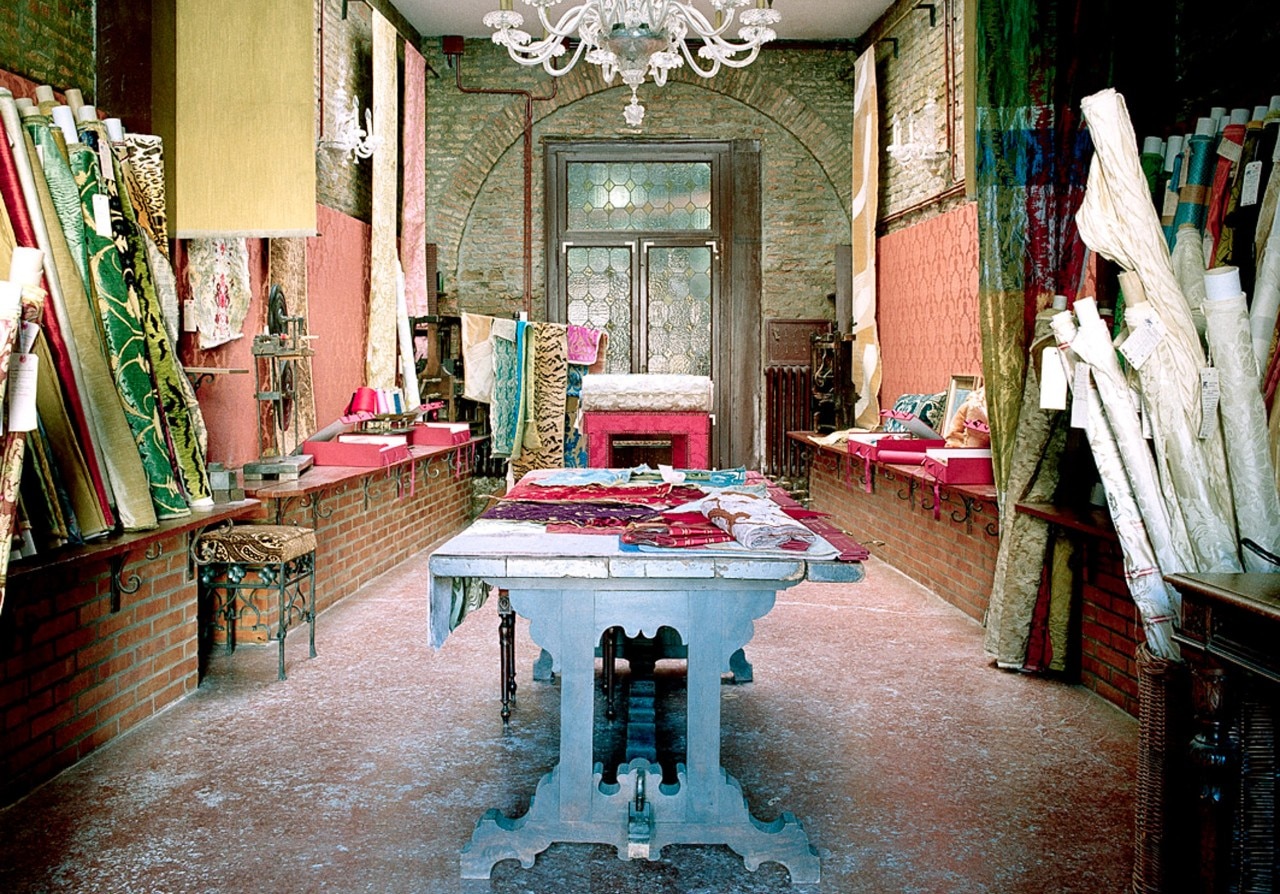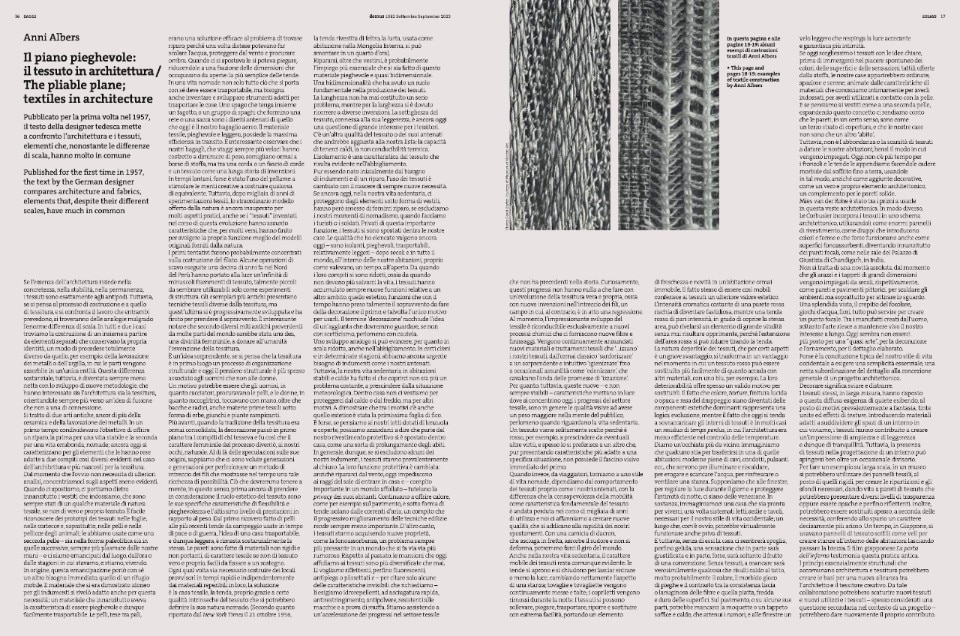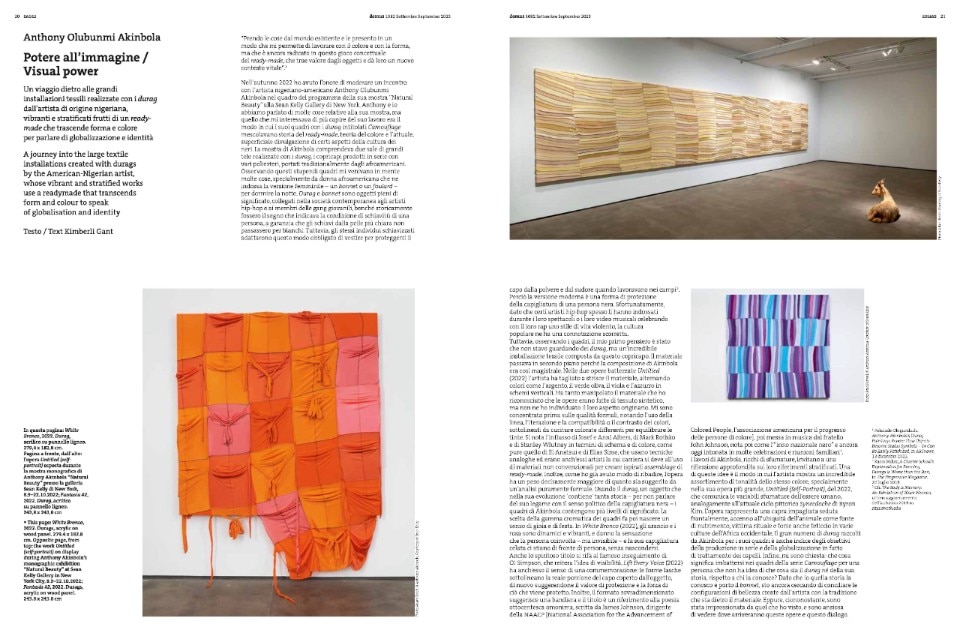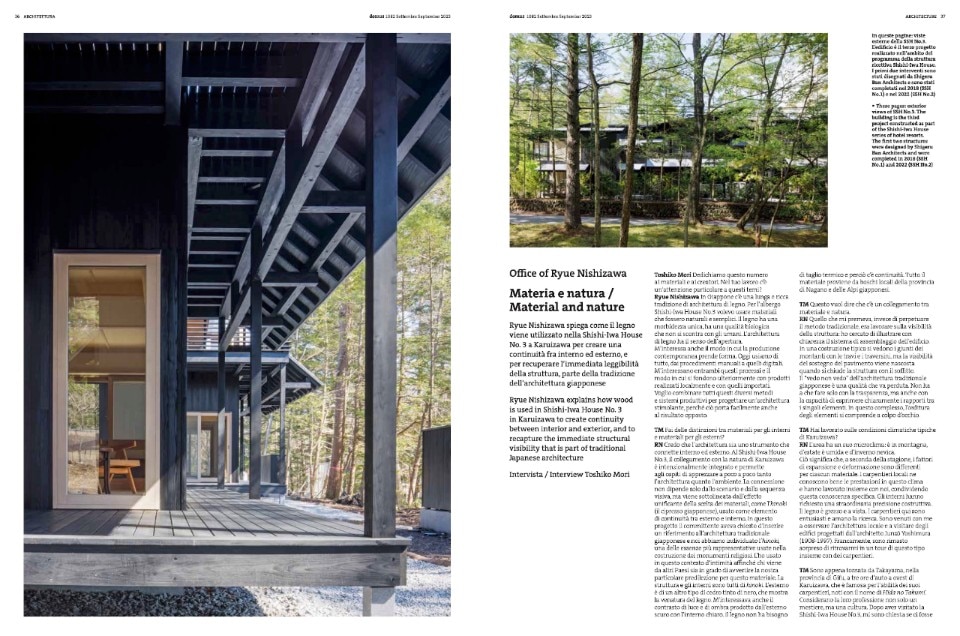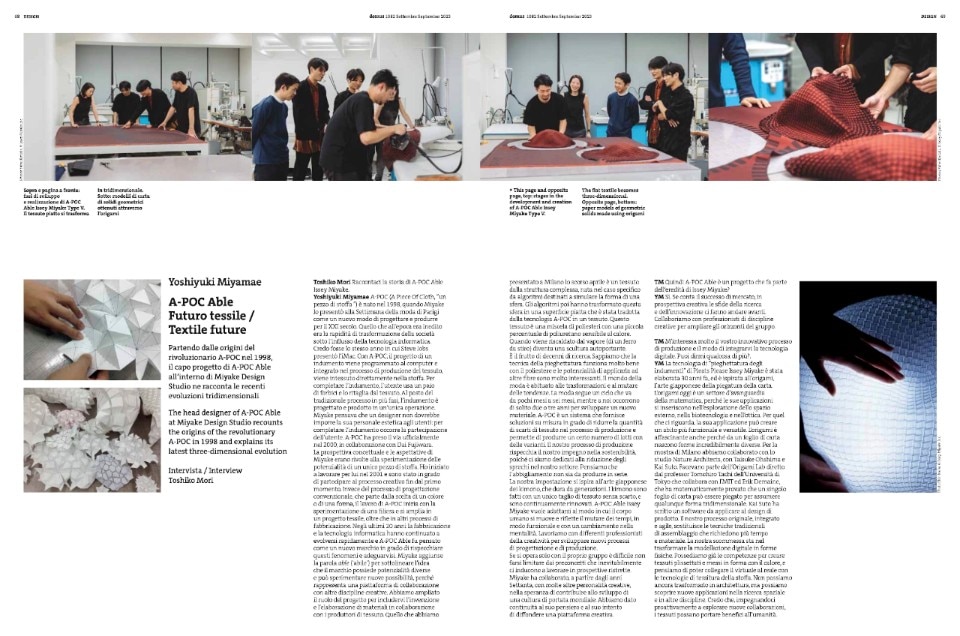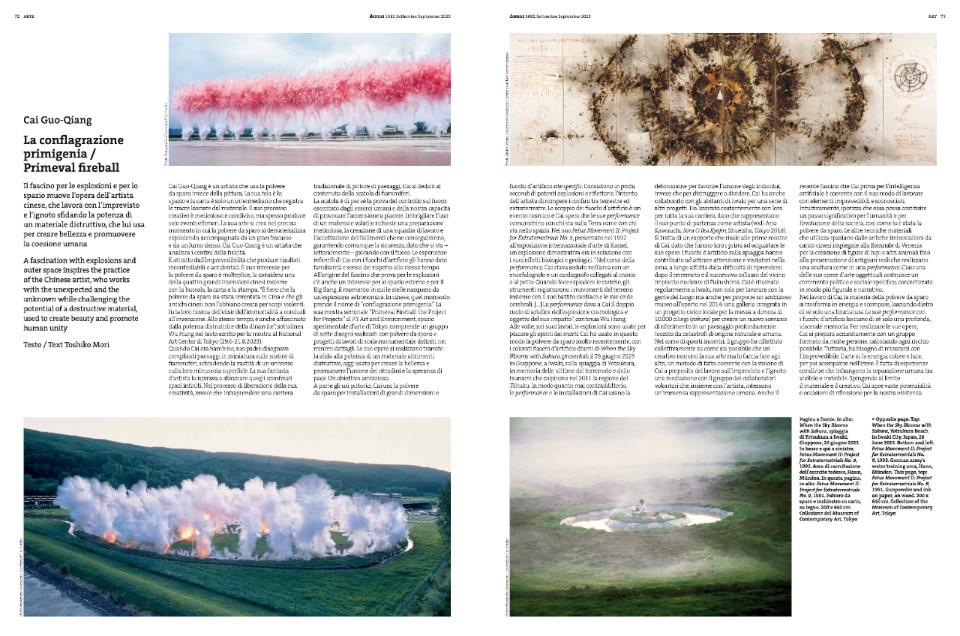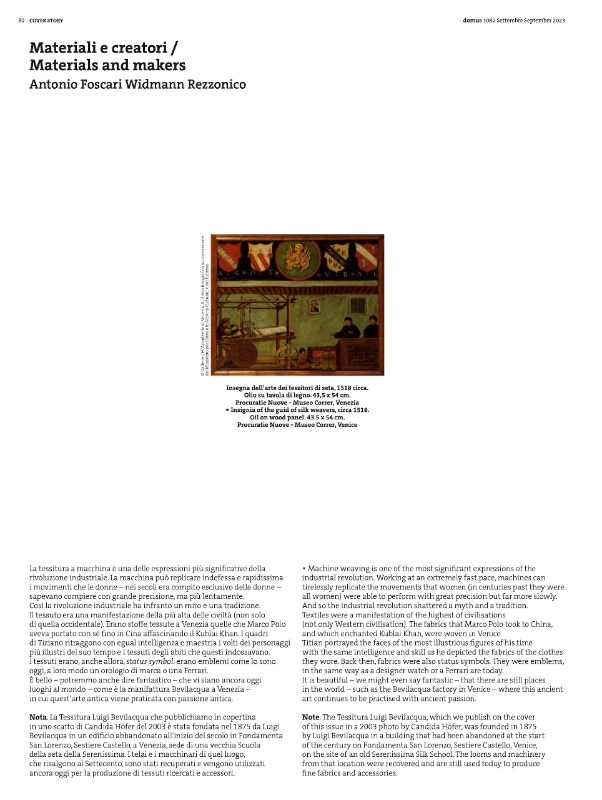The September issue of Domus focuses on the importance of materials and the artists who explore their possibilities. Toshiko Mori, in her Editorial, writes of their importance to the purposes of any creative profession. “Materials encompass and embody the history of human civilisation and ecology, outlining the essential relationship between natural resources and artefacts. Material developments are rapidly evolving as we seek more accessible, equitable and ecological relationships with these resources.”
Starting in the Essays section, Kazuko Koike explains the importance of the art of Issey Miyake’s work: the Japanese designer’s experimentation with his contemporary artists has never known limits, not forgetting that a garment must be beautiful. Next, Milliøns talks through some projects about its practice that injects the principles and material dimensions that govern contemporary image culture into architecture. Malika Leiper writes that objects made by Berea College students are the outcome of a series of workshops on four materials and typologies conducted by the designer Stephen Burks to enact a process of shared experimentation that enhances tradition.
We continue with a 1957 paper by German designer Anni Albers, in which she compares architecture and textiles, elements that, despite differences in scale, have much in common. Kimberli Gant takes us on a journey behind the large textile installations made with durags by artist Anthony Olubunmi Akinbola, vibrant and layered fruits of a ready-made that transcends form and color to speak of globalization and identity.
For Architecture, Phillip Denny illustrates the work of MOS Architects. The relevance of scale is implicit in the firm’s work, from objects to architecture, but also in interiors, such as the recent Apartment No.3 in New York. Matthias Sauerbruch traces the potential of wood in the world of construction, a material historically undervalued from both a formal and technical point of view, it is now the key to a sustainable future for the construction industry. Interviewed by Toshiko Mori, Ryue Nishizawa instead explains how wood is used in Shishi-Iwa House No. 3 in Karuizawa to create continuity between interior and exterior and to recover the immediate legibility of the structure, part of the tradition of Japanese architecture.
Antón García-Abril narrates for Ensamble Studio the formal genesis of the intervention that exploits sprayed concrete in a process that approaches artistic practices such as action painting. Ludovico Centis writes about U.S. studio Johnston Marklee, always seeking a balance between “vernacular indeterminacy and typological specificity”. In a dialogue with the guest editor, Anna Heringer discusses how the use of local materials and vernacular techniques are her main sources of inspiration, as evidenced by the guesthouse she built in Rosenheim for an Ayurvedic center. Closing the section is a paper by Florian Idenburg for SO - IL: to innovate architecture, the firm bases its projects on a broader understanding of material choices: going beyond sustainability, it enhances the material’s vocation.
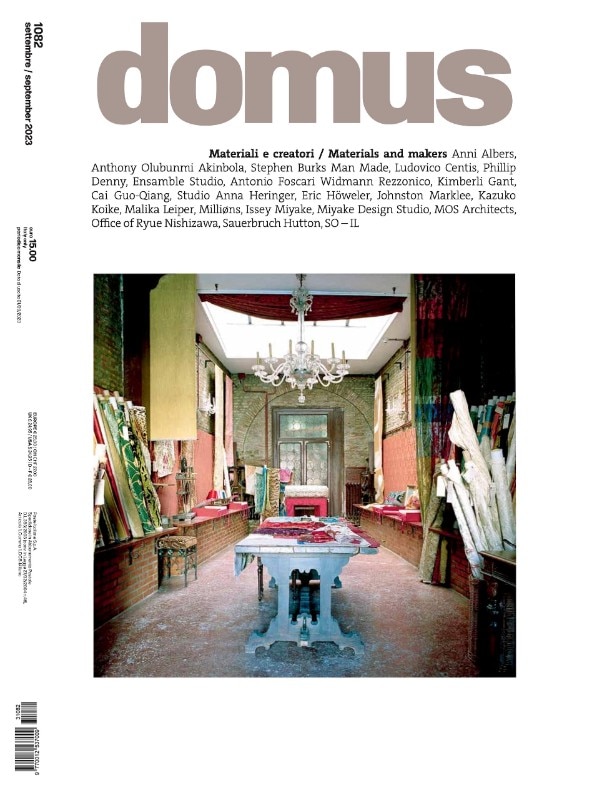
Next up in the Design pages, Toshiko Mori investigates the future of the textile world: starting from the origins of the revolutionary A-POC in 1998, the project leader of A-POC Able within Miyake Design Studio recounts its recent three-dimensional evolutions. Closing the issue for the Art column, we illustrate the work of artist Cai Guo-Qiang. A fascination with explosions and space moves the work of the Chinese artist, who works with the unexpected and unknown by challenging the power of a destructive material, which he uses to create beauty and promote human cohesion.
This month’s Diario, with the usual pages devoted to current events, is opened by the Travel in Italy section, where Editorial Director Walter Mariotti recounts another leg of the year-long journey along the peninsula. This time we stop in Sabaudia, which became the capital of the anti-fascist intelligentsia that opposed the cementing of the country in the 1960s. Next, an analysis of the Fuenti Gardens, a resort on the Amalfi Coast, is an example of land development that combines respect for nature, courage and aesthetic vision. Elena Sommariva talks with Jeremy Fogel, artistic director of the 12th Jerusalem Design Week, to investigate the lies and falsehoods of contemporary design.
Italian sculptor, designer and architect Gaetano Pesce proposes a bridge that is not only infrastructure, but also a cultural showcase for the country, to be crossed in a few minutes or where to spend a week. For the Punti di Vista column, Giulia Ricci discusses with Mauro Sullam and Andrew Daley the working paradigms in the architecture world. A new consciousness has developed around the production system of architecture that presses for better conditions for all workers, from design to construction site.


